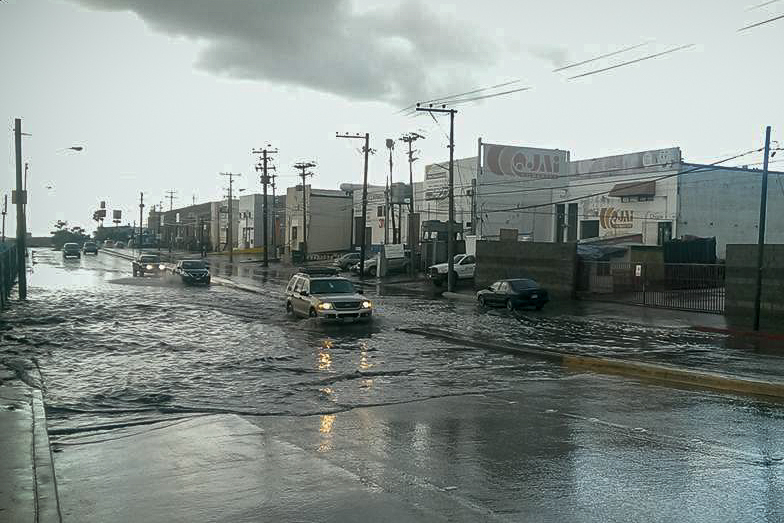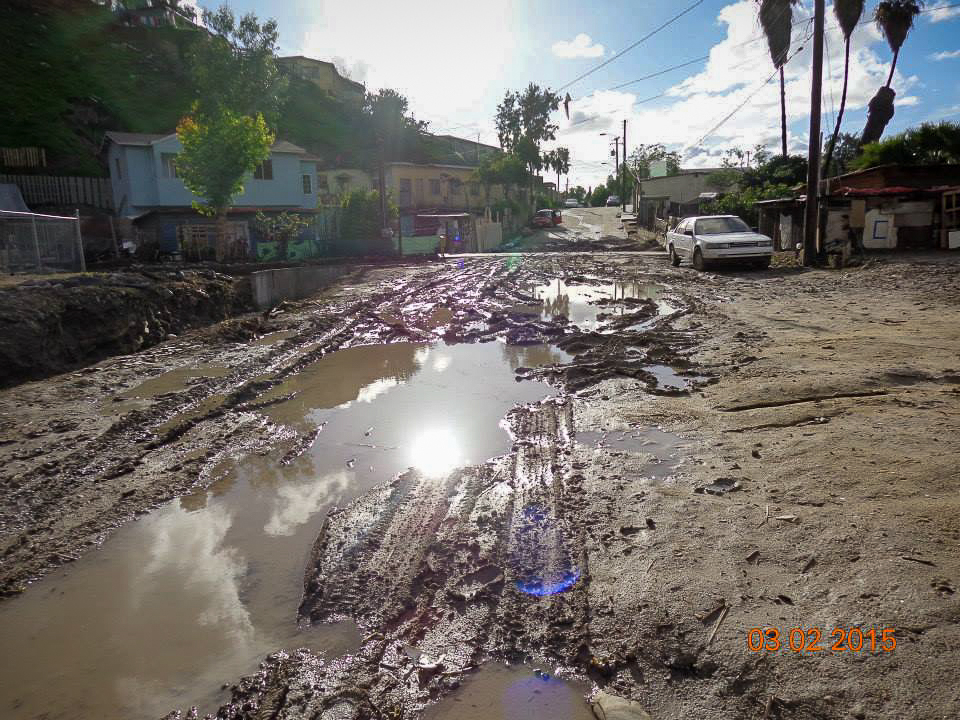Support strong Canadian climate journalism for 2025
This story was originally published by High Country News and appears here as part of the Climate Desk collaboration.
In California, recent flooding events have overwhelmed drainage infrastructure, displacing thousands of residents and revealing gaps in the state and federal disaster response. Climate catastrophes are increasing faster than governmental data or aid can keep up.
These problems are nothing new for the residents of flood-prone Tijuana, Baja California. Tijuana’s floods, which are exacerbated by a lack of sufficient drainage infrastructure, have a direct impact on the western U.S., too: When Tijuana’s floodwaters mix with sewage and trash, they carry that waste to California via the Tijuana River, creating health risks and causing beach closures. In 2021, the Environmental Protection Agency announced that it would spend $630 million to stop these cross-border sewage flows.
In addition to infrastructure, Tijuana lacks the fine-grained governmental climate data necessary to predict future weather-related damages. To address this, in early 2015, researchers at Mexico’s Colegio de la Frontera Norte started the Tijuana Citizens’ Flood Monitor, which combines information about past flood-related damages gleaned from newspapers with constantly updated crowdsourced information about flooding, landslides and other weather-related impacts. Now, the Flood Monitor acts as a platform to interpret technical weather and climate data for a wide public. It also has a human side, responding personally to queries and directing people to resources.

HCN spoke with two of the Flood Monitor’s researchers, Gloria Muñoz and Eduardo Morales Santos, about the possibilities and limits of community-sourced data collection, and how filling in the gaps in scientific knowledge and media coverage with crowdsourced information can help us rethink and expand our understanding of climate impacts.
This interview was conducted in Spanish. It has been translated and edited for length and clarity.
High Country News: Why is Tijuana so vulnerable to flooding?
Eduardo Morales Santos: In Tijuana, urban growth and flooding go hand-in-hand. It’s a city surrounded by canyons, hills and other landforms — the least auspicious place for human settlement imaginable. But we’re here, which over time has created problems. One of the most important is that the city doesn’t have a system of drainage for rainwater that is separate from the drainage system for homes and industry, which means that whenever it rains, the system gets saturated. Within 12 hours, the streets start to fill with water.
HCN: How did the Citizens’ Flood Monitor start?
Morales Santos: The Monitor came about as part of a larger academic project focused on strategies for climate change adaptation in the region. The initial aim was a database made from information collected from local newspapers. It spanned from 1970 to 2013. We were interested in cataloguing specific damage that could help us understand why certain places are regularly damaged by weather effects. We deliberately started it in early 2015 because it was an El Niño year, and during the previous El Niño event, in 2010, there had been a lot of damage.
Gloria Muñoz: It was a pretty rich database. We had information about very small damages that you don’t usually find; for example, we would find newspaper reports that said things like “during the past week, 20 telephone poles fell down, there were 15 car crashes, and three people died.” But we still found that there were a lot of gaps. It didn’t say, “In the Miramar Annex neighbourhood, on such-and-such street, Number 18.” So we came up with the idea of participant cartography.
HCN: What was the importance of the “participant cartography” and crowdsourced data?
Morales Santos: We recognized over time just how important it was for people to be participants — to tell us what problems they had, to document them, draw attention to them. That (process) ends up becoming an important element in explaining why people are in the conditions they are, and why they end up being affected so regularly.
Muñoz: It also helped us see the effects in people’s day-to-day lives, which interrupt their personal activities but also end up having an impact on the city at an economic level — the number of people who don’t go to work, the number of people who have car accidents, the people who get to work late, et cetera. The press documents some damages associated with rains, but the information is mostly aggregated; crowdsourcing allowed us to get closer to people’s lived experiences.

HCN: What is the role of social media in the project?
Muñoz: The project made me think a lot about the potential of Facebook as a platform that resembles, as much as possible, an instance of justice, where we are all communicating horizontally. In Mexico, nine out of 10 people have cellphones with access to the internet, and the thing they use them for is social media. So the Monitor enabled us to reach a wide public, independent of their level of schooling, their age, or even their location.
HCN: Do you think this type of initiative would be useful in other places, such as in the agricultural communities in California recently impacted by flooding?
Muñoz: Yes — the information (documented on social media) could be transformed into information about the rates of damages in the city or to evaluate the city’s capacity to respond. It also helps develop collective memory with regard to climate impacts and to increase the collective consciousness about these risks.
Morales Santos: Nowadays, the most important role of the Monitor, besides collecting the information from newspapers, is Gloria’s level of attention in answering people, giving them correct information, and interpreting new reports; it has ended up shifting from this idea of participant cartography to a site for disseminating and interpreting scientific information, and even offering a degree of assistance. And, of course, whenever there’s the possibility to document damages (whether through newspaper reports or participant cartography), we do so.

HCN: How can this type of community-sourced data help us rethink our understanding of climate impacts?
Muñoz: The prediction is that extreme events are going to become more and more common. I see a lot that people talk about the “complexity” of the problem, but with this kind of approach, we can put names to that complexity. For example, a woman contacted us one winter to say that she needed help because her house had burned down. Is that an accident, or is that an instance of weather-related damage? There was a freeze there, so probably her house burned down because she was using something dangerous to keep warm.
We have to pay attention to that kind of thing, and bring them back to the issue of climate change. They are details that get away but that at the end of the day, contribute to the complexity of the problem. The complexity is right there, in people’s lived experience of the climate.






Comments